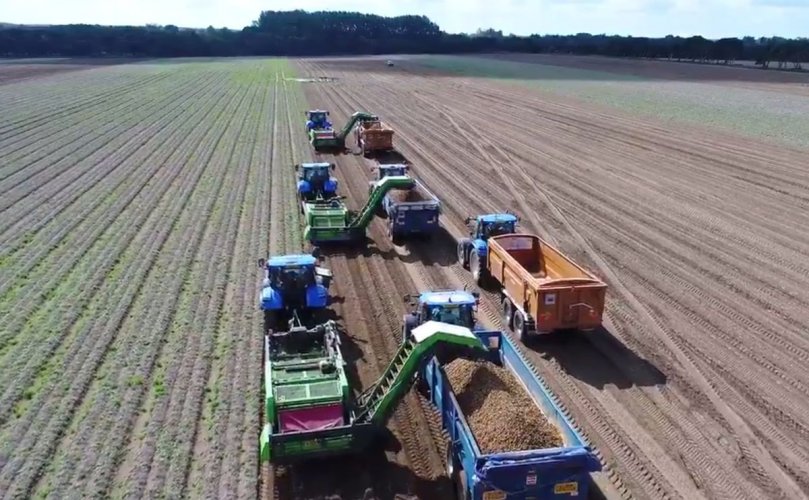For the current European potato harvest, the North-western-European Potato Growers (NEPG) estimate the total potato production at 27.9 million tons for the five NEPG countries (Belgium, Germany, France, the Netherlands and Great Britain). The estimate is based on sampling and data from the first actual harvests.
Acreage has increased 4.6 per cent compared to last year, while the average yield per hectare is estimated at 48.2 ton/ha. This is 2.9 per cent higher than the five-year average. The NEPG reports this is based on tests and estimates from the various countries, and that final figures may deviate from this yield estimate.
The total potato production is up 11.5 per cent compared to the five-year average and 13.5 per cent higher than the total yield last year, but still below the record harvest in 2014 of 28.5 million tonnes.
Despite the difficult start of this season, the potato crop has recovered well during the summer and the result is a high quality product. Some quality issues for potato variety Bintje (secondary growth and Phytophthora) have been reported.
In the Netherlands, there have also been reports of a too low specific gravity of the tubers (weight in water). This results in a low yield during processing, requiring more potatoes.
The current (low) potato pricing indicates a high supply in the coming months. However, the NEPG emphasizes that a comparison with harvest 2014 is not entirely realistic.
Since 2014, the demand of the potato processing industry has increased with 1.5 million tonnes. On top of that, the export of processed product to countries outside the European Union has steadily increased in recent months, despite the increasing value of the Euro. This continues to stimulate the demand of raw materials.
In the Netherlands and Germany, the NEPG expect more potatoes to be used for feed and for the production of potato starch. Many growers will opt to not store potato lots of a lower quality. Furthermore, experience has taught that in years with very low prices, potatoes are rejected more easily and that the amount of tarra is typically higher.
The North-western European Potato Growers expect to publish final figures by the end of October.
Source: Potato Pro











